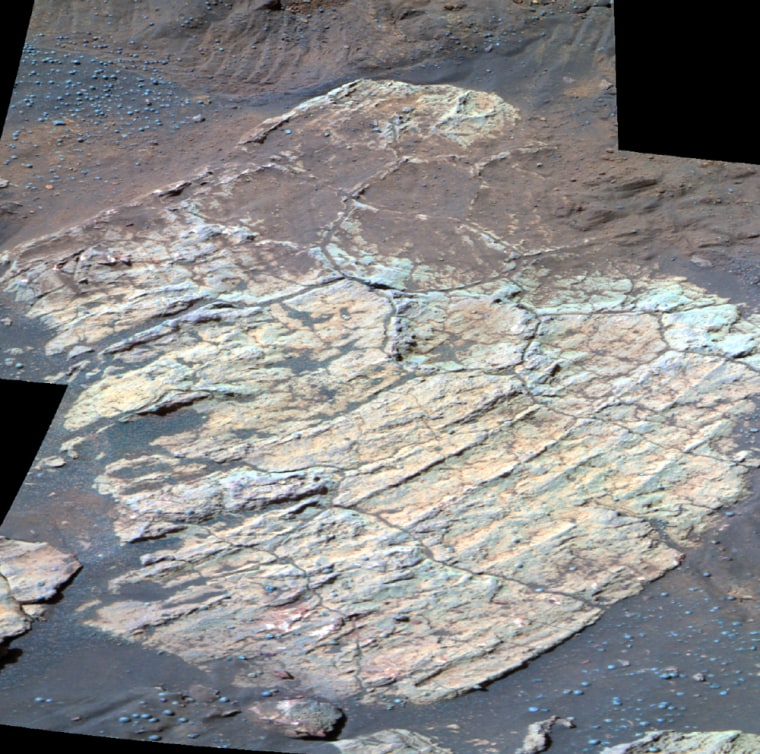The Mars rovers have found fresh evidence that water was plentiful in both the hills and plains of the now-barren Red Planet, scientists at NASA Jet Propulsion Laboratory said Thursday.
The robots, called Spirit and Opportunity, have been examining rocks and terrain on opposite sides of Mars since January for clues about whether the planet once held enough water to support life.
Opportunity was the first to send back evidence that a salty sea once covered the area where it landed, a flat plain known as the Meridiani Planum. Spirit also found signs that the massive Gusev Crater, where it landed, had seen small amounts of water.
Now, recent data sent back by Opportunity suggests the area had a second drenching sometime after the plains dried out, scientists said.
Cracks chronicle changes
Patterned cracks found in rocks in Endurance Crater, the stadium-sized depression Opportunity has been exploring for several months, showed changes that could be made by a small amount of water.
“These (cracks) are ... well-known in Earth to be associated with water,” scientist John Grotzinger said. “The rocks become impregnated with water, it dries out and pulls in all directions.”
Since only the surfaces of the rocks were altered, scientists theorized the water did not stay for long and may have come from melting frost or underground ice.
The second water episode probably occurred after Endurance Crater was formed and long after the Meridiani Planum was first covered with water, lead investigating scientist Steve Squyres said.
More evidence from Spirit
Spirit has also found signs that water changed rocks in a range of hills halfway around the planet from the Opportunity rover.
After completing its primary mission, Spirit drove about 2 miles (3 kilometers) from its landing site to the Columbia Hills, where it found rocks, older than the lava flows forming the floor of Gusev crater, that contained water-related minerals.
“Every single rock in the hills has shown alteration by liquid water,” Squyres said.
The Spirit team next plans to drive the rover higher into the hills to examine layered rocks that could hold further clues to the area’s geologic history, he said.
